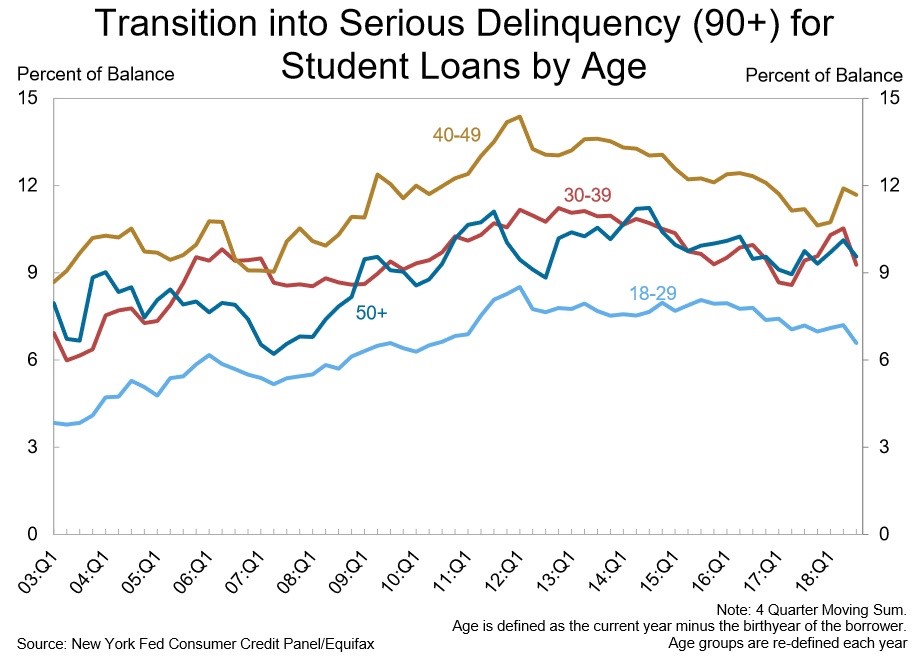by Cody Lindman
Over the past year, all forms of U.S. household debt have increased, with aggregate U.S. household debt reaching $13.95 trillion for the third quarter of 2019, an increase of $440 billion compared to a year prior. However, delinquency rates have held relatively constant over the past year. People between the ages of 40 and 49 now hold 25.1% of the total debt outstanding, the most of any age group. However, people between the ages of 18 and 29 were the most likely to be 90+ days delinquent. Unsurprisingly, mortgage debt accounts for the lion’s share of U.S. household debt, comprising approximately 67.6% of total debt outstanding. As of September 30, 2019, 4.8% of outstanding debt is in some stage of delinquency, a 0.1% increase compared to a year ago. Additionally, more than 63.5% of delinquent debt is considered 90+ days delinquent. However, on a per capita basis, household debt is still below the peak reached during the 2008 recession.
Student loan debt balances reached $1.50 trillion during the third quarter of 2019, up from $1.44 trillion a year prior. As of September 30, 2019, 10.9% of student debt balances were 90+ days delinquent or in default, a decrease of 0.6% compared to a year prior. People between the ages of 30 and 39 carry the most student debt at $490 billion or 32.8% of total student loan balances. Surprisingly, people between the ages of 40 and 49 were the most likely to be 90+ days delinquent on their student loans. One reason for this may be because this age group carries the largest amount of debt in aggregate and is prioritizing repaying mortgage debt and auto loan debt rather than student loan debt. This would be logical because there are more immediate negative consequences if one fails to repay mortgage debt (foreclosure) and auto loan debt (repossession) as compared to student loan debt.
STAY IN THE LOOP
Subscribe to our newsletter.
Explore More






